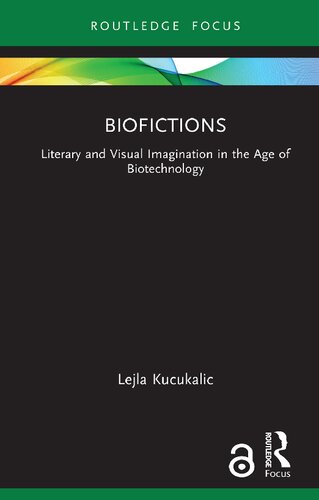

Most ebook files are in PDF format, so you can easily read them using various software such as Foxit Reader or directly on the Google Chrome browser.
Some ebook files are released by publishers in other formats such as .awz, .mobi, .epub, .fb2, etc. You may need to install specific software to read these formats on mobile/PC, such as Calibre.
Please read the tutorial at this link: https://ebookbell.com/faq
We offer FREE conversion to the popular formats you request; however, this may take some time. Therefore, right after payment, please email us, and we will try to provide the service as quickly as possible.
For some exceptional file formats or broken links (if any), please refrain from opening any disputes. Instead, email us first, and we will try to assist within a maximum of 6 hours.
EbookBell Team

0.0
0 reviewsBiofictions introduces three novel concepts: ‘biofiction,’ ‘bioimagination,’ and ‘biodiscourse’ to talk about intersections of literary and visual texts and biotechnology. The book proposes a new interdisciplinary area of research that correlates processes of genetics and literature, based on two critical approaches. One, drawing parallels between the genetic codes, human language, formal (binary) language and posthuman communication and the role of meaning and imagination in these forms of communication. Two, by defining "biofictions" as a critical scientific-artistic concept and as a corpus of texts that engage ideas and developments in molecular biology. Syncretic connection between biotechnology and literature is especially evident in an open science movement and a literary artistic genre of biopunk, discussed across chapters. The study includes well-known contemporary texts such as David Foster Wallace’s Infinite Jest, that are re-contextualized as biofiction, it offers a re-reading of important but neglected novels such as Thomas Disch’s Camp Concentration (1967) and it analyzes new visual texts such as the TV series Altered Carbon and Ghost in the Shell films. Based on these wide-ranging examples and new critical concepts, the book argues that coming up with possible alterations for the genetic code or intended traits for the organism is a discursive practice that brings into being bio-narratives that are both organic and literary.
Chapter 1 of this book is freely available as a downloadable Open Access PDF under a Creative Commons Attribution-Non Commercial-No Derivatives 4.0 license.